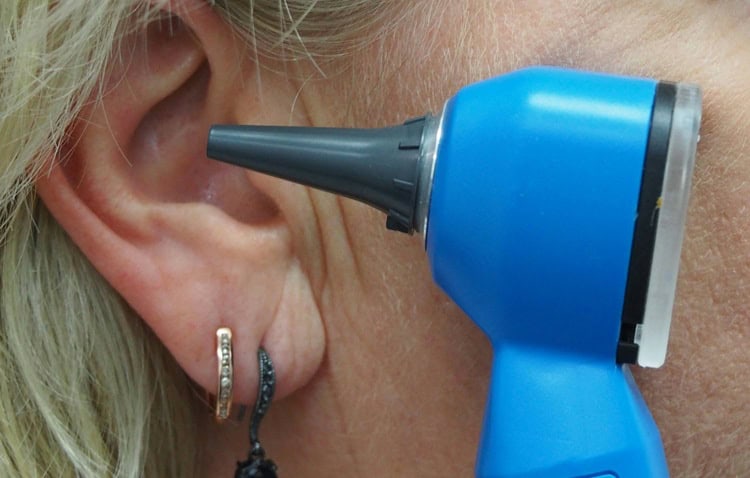A Complete Guide to Grommet Surgery
Glue ear, medically known as otitis media with effusion, is a common condition in which sticky fluid builds up behind the eardrum. This can lead to hearing loss, discomfort, and, particularly in children, delays in speech and language development. While glue ear most frequently affects children, with up to 80% experiencing it before the age of 10, adults can also develop the condition, especially after colds, allergies, or recurrent ear infections.
Grommet surgery is a straightforward procedure that can significantly relieve symptoms for those whose glue ear persists despite watchful waiting. Whether you’re a parent considering grommets for your child or an adult exploring treatment options, understanding the process, benefits, and risks is essential. This guide will walk you through everything you need to know about grommet surgery for glue ear, highlighting the key differences between children and adults, so you can make an informed decision about the best course of action.
What are Grommets?
Grommets, also called ventilation tubes, are tiny plastic or sometimes metal devices inserted into the eardrum. They create a small passageway that allows air to flow into the middle ear, helping to equalise pressure and drain any trapped fluid. This is especially important if the Eustachian tube, the natural channel for air and fluid between the middle ear and throat, is not working properly.
The design of grommets usually includes flanges to keep them securely in place. They are not intended to remain in situ permanently; instead, they offer temporary relief while the underlying cause of glue ear resolves. In most cases, grommets remain in place for six to twelve months before the eardrum heals and naturally pushes them out.
When is Treatment with Grommets Recommended?
Both children and adults can benefit from grommets, but the reasons for needing them and the way they are inserted may differ slightly. For children, the primary goal is to restore hearing and support normal speech development. Although some children also have grommets for recurrent ear infections, known as acute otitis media (AOM). For adults, the focus is usually on relieving persistent hearing loss and preventing recurrent infections. In both cases, they are often linked to Glue Ear.
Indications for Grommet Surgery
While watchful waiting is often the first approach for both adults and children, surgery is considered when symptoms are persistent, severe, or significantly impact the quality of life. The decision to proceed with grommets should always be made in consultation with an ENT specialist Surgeon, who will consider the individual’s medical history and specific needs.
For Adults
A specialist will consider the following:
- Persistent Glue Ear: When fluid remains in the middle ear for three months or longer, causing ongoing hearing loss or discomfort.
- Recurrent Ear Infections: Frequent episodes of acute otitis media that do not respond well to other treatments.
- Eustachian Tube Dysfunction: Chronic problems with pressure regulation in the ear, often due to allergies, sinus issues, or previous infections.
- Other Medical Conditions: In some cases, grommets may be recommended for individuals with certain anatomical or medical conditions affecting the middle ear.
For Children
And, in paediatric cases, a specialist focuses on:
- Speech or Language Delays: Hearing loss from glue ear can delay speech and language development, making early intervention important.
- Frequent Ear Infections: Children who have repeated infections may benefit from grommets to reduce the frequency and severity of these episodes.
- Confirmed Diagnosis: Grommet surgery is typically recommended only after glue ear has been confirmed by audiological tests and symptoms have persisted for at least three months.
What to Expect with Grommet Surgery
Whether for yourself, another adult or your child, here is everything that will happen before, during and after your procedure.
Pre-Operative Preparation
Before grommet surgery, patients undergo a thorough medical assessment, including audiology tests to confirm the diagnosis. Fasting instructions and a consultation about anaesthesia are provided if having the procedure under general anaesthetic.
Local or General Anaesthetic?
Children are usually given general anaesthesia to ensure they remain still and comfortable during the procedure.
Adults are often able to opt for the local anaesthesia option, as they are able to remain still for the surgeon to complete the procedure. However, if general anaesthesia is preferred or local anaesthesia is not possible, arrangements will be made.
During the Surgery
The procedure is delicate but can be quickly performed by a skilled surgeon and can therefore be relatively straightforward. The surgeon makes a small, carefully placed incision in the eardrum, drains any trapped fluid, and inserts the grommet into the hole. This allows air to circulate in the middle ear and helps prevent further fluid buildup.
The Grommet Insertion Procedure
Grommet insertion is typically performed as a day-case procedure, taking about 30 minutes of surgical time. Most patients go home the same day, especially if they are eating and drinking well after the surgery.
Post-Operative Care
After the procedure, patients are monitored for a short time before being discharged. Pain management may include over-the-counter pain relief, and instructions are given to keep the ear dry and clean.
Follow-up appointments are scheduled to monitor healing and assess hearing improvement.
Recovery
The general guidelines during the recovery from grommets include:
- Keep the Ear Dry: Avoid getting water in the ear during the healing process. Use a cotton ball coated with petroleum jelly in the outer ear while showering.
- Swimming: Swimming should be avoided for 2 weeks after surgery, and diving or prolonged underwater activities should be avoided while grommets are in place.
- Use Ear Protection: Consider using earplugs or a swimming cap to protect the ears during water activities.
For adults, most can return to work the same day after surgery, provided they feel well and have no complications. And, with children, they may need a few days off school to recover..
Anyone who has had a grommet procedure should monitor for signs of infection, such as increased pain, discharge, or fever, and seek medical advice if any complications arise.
Risks and Complications
Grommet surgery is generally safe, but like any procedure, it carries some risks:
- Infection and Bleeding: These are the most common complications, but this is easily treated with a short course of antibiotic ear drops.
- Persistent Perforation of the Eardrum: In about 1–2% of cases, more likely in children, the hole in the eardrum may not heal after the grommet falls out, in some cases requiring further treatment. In some cases, a perforation is beneficial as it acts as a grommet.
- Scarring or Tympanosclerosis: Some patients may develop scarring on the eardrum, which is usually harmless.
- Grommet Displacement or Extrusion: Occasionally, a grommet may fall out too soon or become blocked, requiring medical attention.
- Recurrence of Glue Ear: Glue ear can return after grommets have fallen out, especially in children.
Most complications are mild and can be managed with prompt medical care. Regular follow-up visits help ensure any issues are identified and treated early. For most people, the benefits of grommets outweigh the possible risks. But if you’ve noticed any complications, early intervention helps prevent any damage to the ears, so it’s important to seek medical advice.
Outcomes and Effectiveness
For Adults
Grommet surgery has a high success rate in adults, with most experiencing significant improvement in hearing and quality of life. Recurrence of glue ear is possible, especially if underlying issues like Eustachian tube dysfunction persist, but further interventions are available if needed.
For Children
Children typically benefit greatly from grommets, with improvements in hearing, speech, and learning development. Most children outgrow glue ear by the age of 10, but about one in four may require a second set of grommets if symptoms return. The long-term outlook is excellent, with the majority of children achieving normal hearing and development.
Alternatives to Grommet Surgery
Whilst grommet surgery remains the most effective treatment for persistent glue ear, some cases may require alternative treatments. Your ENT specialist may mention the following instead:
Non-Surgical Options
- Decongestants or Nasal Steroids: These are sometimes used, but evidence for their effectiveness in treating glue ear is limited.
- Antibiotic Therapy: Antibiotics may be prescribed for infections, but are not effective for glue ear itself.
- Auto-Inflation Devices: These can help some children by encouraging the Eustachian tube to open and drain fluid.
- Hearing aids: These can be dispensed by an audiologist.
Alternative and Additional Surgical Options
- Adenoidectomy: Removal of the adenoids may be recommended if they are contributing to Eustachian tube blockage, especially in children.
- Myringotomy Without Grommet Insertion: This involves making a small hole in the eardrum to drain fluid, but does not involve placing a grommet.
A Final Word
Glue ear is a common and completely treatable condition that affects many children. It normally goes away on its own. But, if suitable, grommets can provide a simple, effective solution to combat glue ear and relieve hearing loss.
For tailored advice, speak to an ENT specialist, who can advise you on glue ear, general ear health, and the benefits of grommets for you or your child.
You can speak to a member of our friendly team on 0121 769 0999, email hello@midlandhealth.co.uk, or book online.

